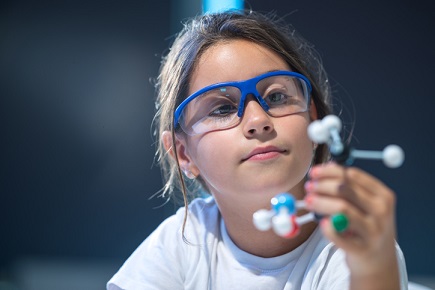
A key enabler in this context has been school-industry partnerships, which allow students to engage with experts in various fields of employment, as well as access hands-on experience to get a feel of what their jobs will be like.
Last year, Samsung partnered with REMIX Sydney 2017’s Creators Wanted event, where some of the most forward-thinking industry leaders gathered to discuss the future of the creative economy.
The aim of the collaboration was to contribute different perspectives and fresh ideas to the STEM conversation – not just within the education sector, but across the wider Australian community.
The electronics giant is also working with Social Ventures Australia (SVA) to expand the Bright Spots Schools Connection through the creation of the STEM Learning Hub.
SVA developed the Bright Spots Schools Connection model to connect schools from low-SES communities to work together to help improve teaching and learning, through a collaborative network.
It works with and supports school leaders to investigate evidence, use it in practice, create new evidence and leverage it to articulate, evaluate and spread effective practice.
Campbelltown Performing Arts High School was selected as part of the STEM Learning Hub as they have been showing best practice in STEM education.
Having implementing STEM for three years, the school has tested a range of models, from single classes to cross-classes to identify approaches that would fit best into their local context.
This has included looking at teacher professional learning, action learning projects aimed at identifying how STEM might be implemented in specific year groups, the evaluation of STEM strategies on student learning and engagement, and the development of a project report and case study for further iterations of work.
CPAHS has also done extensive work in the area of integrated learning, developing, testing, refining and codifying approaches to developing cross-disciplinary unit of work.
This process has been adopted by a number of faculties to co-create units of work that allow for deep, integrated learning experiences for students whilst maintaining subject integrity and ensuring teachers are still teaching within their specified subject area. This model will be adapted for the development of STEM curriculum for 2018 and beyond.
Daymanii Ta’Avao a student at CPAHS presented on the Creators Wanted stage with Kate Driver, the deputy director of Questacon.
“It was a great experience getting up in front of the crowd and sharing my personal view, as a young person, about the importance of STEM and how it can prepare us for the future in a rapidly changing world,” she told The Educator.
“Through school, I learnt that studying STEM isn’t just helpful for those that want to become scientists, engineers or mathematicians. STEM helps us to develop skills that will be useful in so many fields and professions; skills like problem-solving and critical and creative thinking.”
Ta’Avao said she was excited about how she, and other people of her generation, can use STEM to make a real difference to the broader community and “solve some of the world's wicked problems.”
“I am excited and optimistic about the future,” Ta’Avao said.


